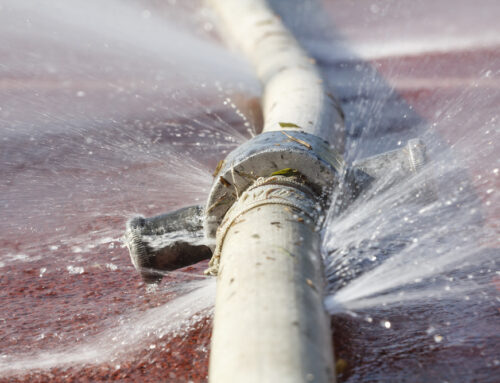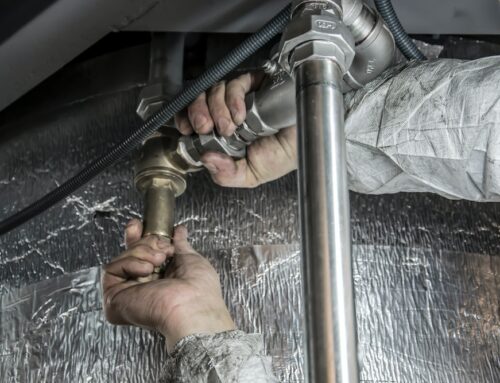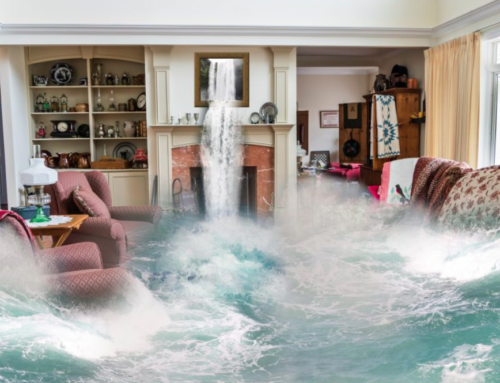The availability of warm, flowing water is critical to daily life in most families. From showers, baths, and regular hand-washing to cooking, laundry, and dishwashing, the ordinary individual may use water of varying temperatures up to 20 times daily. When that consumption is multiplied by each family member, the demands imposed on the water heater become clear. If it is broken, you may consider replace water heater today.
You’ll notice symptoms that your water heater needs to be changed sooner or later. Even the greatest of water heaters have a lifetime of around a decade, whether owing to use strain or tank age. While regular maintenance may help extend the life of your water heater, if you live in the same house for more than eight years, the pre-existing tank will most likely need to be replaced with a new one. As a result, as a homeowner, you should be aware of the indicators that suggest it’s time to repair your water heater.
- Your water heater is too old.
Nothing lasts forever, especially a water heater. During a typical house occupancy, a resident must replace water heater. The problem is that most people are unaware when their water heater is about to expire. However, not understanding this might pose severe concerns if the heater malfunctions due to age.
How Long Do Water Heaters Last
The majority of water heaters survive between eight and 10 years. While ten is the age at which heater replacement is typically suggested, the need to replace water heater may emerge before or beyond this time frame. Whether or not a heater starts to exhibit symptoms, it should be replaced
after a decade from the date of manufacture.
- A rusted water or heater inlet valve
Even though steel is the most robust material on earth, it has a weakness: rust. When corrosion takes hold on a steel surface, it progressively spreads and eats through the steel in some areas. Rust is a warning indicator for impending leaks on steel water pipelines and tanks.
The problem is that it’s frequently difficult to distinguish whether the rust comes from the water heater or the pipes leading to your faucet. In any event, rust is an urgent issue that must be addressed for your household’s cleanliness.
Rusty Water
If you see rust in hot water coming from your sink and bathtub faucets, you most likely have a rusted water heater. Rusting is unavoidable on heaters that have been used over their expiry date. Rusting may develop in any water heater, even just eight to ten years old.
Rusted Valve/Inlet
If you see rust around the water input or pressure release valve on the heater, rust may have also taken root within the tank. If this is the case, the only solution is to replace the tank as soon as possible. Once rust enters the scene, saving an old water heater is impossible.
Rusted Pipes
The problem might be with the pipes if your tap water is rusty. If your plumbing system is made up of galvanized pipes, rust may grow on the insides over time, and the issue can occasionally get so severe that it is visible in sinks and tubs. Draining several buckets of hot water from the tank is one approach to establish whether the rust is coming from your pipes or the water tank. If the water is still rusty after the third bucket load, the issue is most likely with the tank rather than the pipes. This, of course, means it’s time to replace water heater. After all, if the rust eats through the steel, water leaks are likely.
- Water Heater Noise
Noise from the tank is another telling indicator of a failing water heater. As the heater matures, rumbling sounds will get louder and louder as the tank warms up. When the cause takes root, the issue will likely worsen in families that use a lot of hot water. The following factors often cause water heater noise:
Sediment Accumulation
As an old water heater is repeatedly relied upon to heat and reheat water, sediment forms on the tank’s bottom. The silt hardens and becomes thicker along the tank bottom over time. Sediment may quickly degrade a water heater and cause the following issues:
Inefficiency – Due to the additional effort required in heating water, water heaters with sediment accumulation waste more energy.
Accelerated Damage – The additional time a tank spends heating water may make the metal brittle, increasing the risk of fracture development.
Noise from a water heater produced by silt accumulation often indicates that the tank may ultimately leak. However, the harm caused by silt may be avoided using the following method:
Flush the Heater
Your water heater’s tank should be cleansed at least once a year. This removes the silt from the tank, allowing it to function more effectively. A water heater is more likely to endure its entire ten-year lifespan with an annual tank clean. It is advisable to have qualified plumbing specialists handle the flushing. If a tank continues to produce noise after the sediment has been cleaned, there is likely a more significant issue with the water heater. In any event, good water heaters should not generate noise, and those that creak or rumble despite frequent cleaning are likely on the edge of a fracture or leak and should be replaced as soon as possible.
- Water Heater Leakage
As your water heater nears the end of its useful life, there is a greater likelihood that water may emerge on the floor surrounding the tank. When you see water, it usually implies one of two things: leaks. Depending on where your water heater is positioned within your home, a leak might cause substantial property damage. As a result, the most severe issue that might arise is a big leak in your water heater.
Source of Leaks
Expansions of the tank’s metal often cause water leaks. These expansions occur over time when the inner body of the tank is subjected to thousands upon thousands of heating cycles. When a fracture initially starts, the space is likely to be small enough to contain water in any but the most extreme situations. As a result, water will not leak while the tank is idle, but when the metal expands at the peak of each heating cycle, tiny quantities of water are guaranteed to seep through the gap.
- The Water Heater Isn’t Working
Warm and hot water is among the most crucial home essentials. You can’t wash your hands, take showers, clean your dishes, or use your washing machine if you don’t have warm water. Most people take warm water for granted and are therefore thrown off balance when water from the sink or bathtub fails to reach an appropriate temperature.
The lack of heat in your water supply is most likely due to one of three faults with your water heater:
- A faulty thermostat
- a faulty heating element
Thermostat Adjustment
If the water from your taps isn’t hot enough, it might be due to a problem with the electrical thermostat. A simple thermostat adjustment might be the answer to such difficulties. The thermostat settings on a domestic water system should be between 120 and 140 degrees.
Heating Element Fault
If all you get is cold water from your sink and bathtub faucets, the problem might be a faulty heating element in your water heater. With a simple phone call to Pro Plumber San Diego, you should be able to acquire the repairs you need and have the heating functions restored within hours. If the water heater was produced within the last eight years, a sudden loss of heating power is unlikely to need a whole heater replacement.
Call Pro Plumber San Diego for Water Heater Maintenance.
Water is one of the most often used resources in any home. The bulk of these everyday uses needs warm water. As a result, if your water heater fails for any reason, the problem must be resolved as quickly as possible to guarantee the comfort of all home members.
Residents in San Diego contact Pro Plumber San Diego for assistance with their plumbing and HVAC issues. Call us immediately if you see any indicators that your water heater needs to be replaced.









